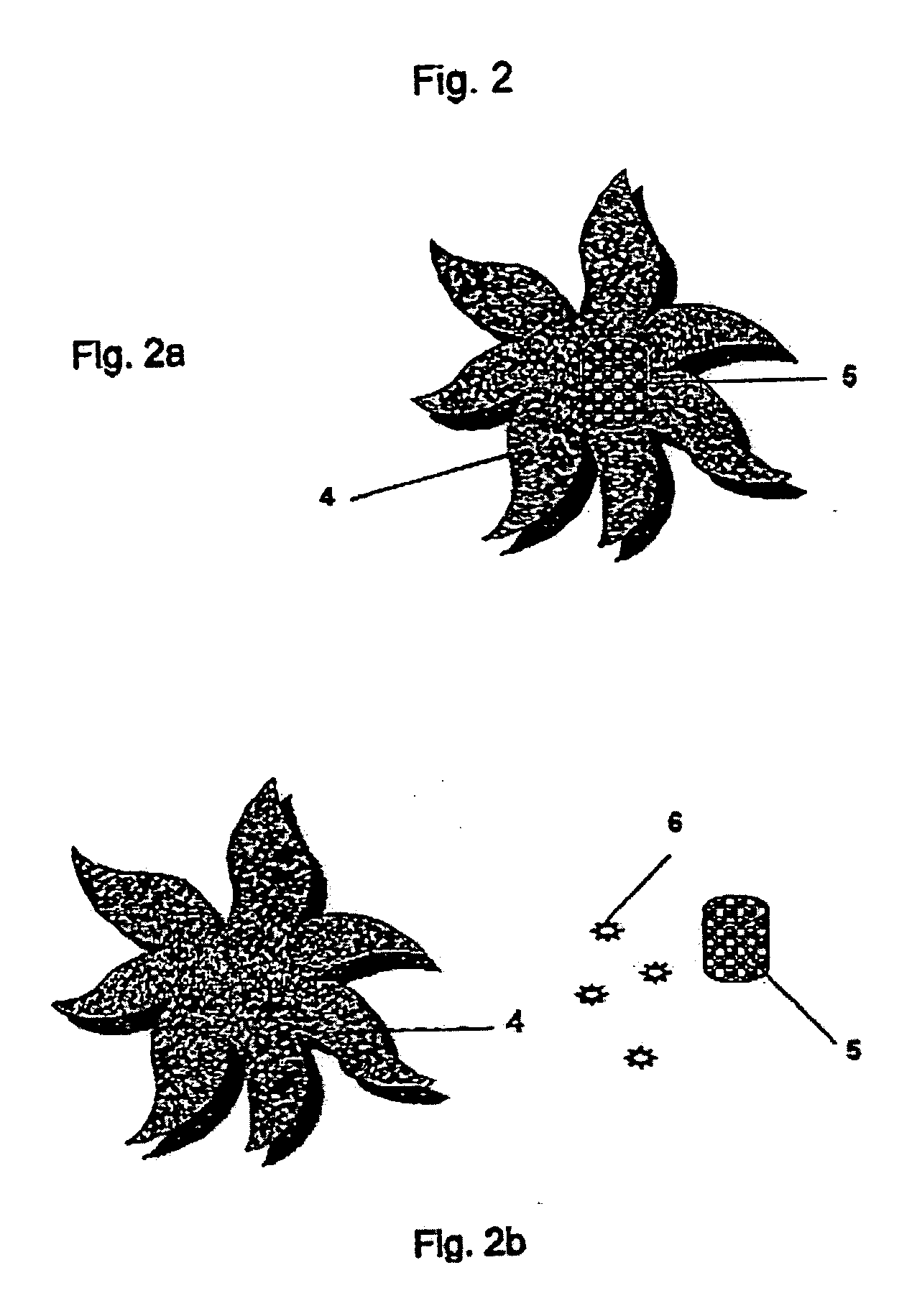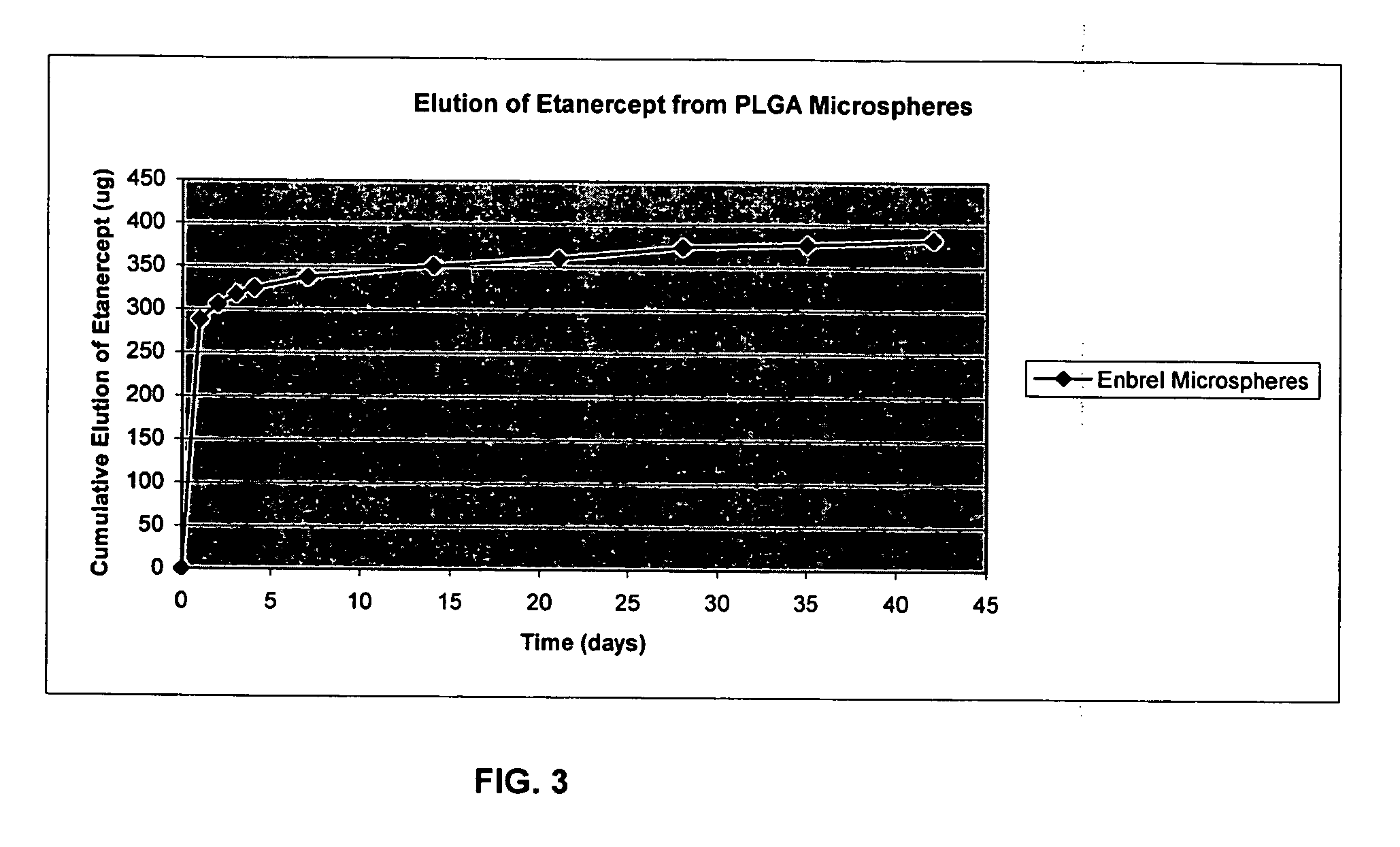Controlled and directed local delivery of anti-inflammatory compositions
a composition and local delivery technology, applied in the direction of drug compositions, osteogenic factors, peptide/protein ingredients, etc., can solve the problems of limited amount of agents, insufficient method to serve patients, and degradation of cartilage matrix, so as to reduce pain and limit bone loss
- Summary
- Abstract
- Description
- Claims
- Application Information
AI Technical Summary
Benefits of technology
Problems solved by technology
Method used
Image
Examples
example 1
[0079] Evaluation of the effectiveness of protein-based inhibitors of TNFα function on mechanical injuries induced by sciatic nerve constriction (CCI) in rats, a model for investigation of chronic and acute pain syndromes, is performed to identify compounds having a significant pain inhibiting effect, and to establish optimal local dose levels of those compounds.
No. AnimalsSystemicLocalLocalLocalTreatmentdose10−110−210−3Vehicle only4(neg ctrl)Gabapentin4(pos ctrl)Compound #14444Compound #24444Compound #34444TOTAL20121212
Four animals per group with CCI “neuropathic pain” are randomly assigned. Following administration of the test compound via systemic injection or a local delivery via an Alzet® osmotic pump, the CCI animals undergo a series of behavioral tests (i.e. mechanical Tactile allodynia and Thermal Nociceptive Test). The first dose is given prior to testing, with subsequent doses being provided at the half-life of each compound.
Behavioral Testing: Von Frey Test; Thermal ...
example 2
Comparison and Ranking of Protein-Based Inhibitors of TNFα Function in the Chronic Constriction Injury (CCI) Rat Model: Systemic Versus Local Delivery
[0086] Systemic doses of compound are administered by subcutaneous injection starting the day of surgery, and periodically thereafter as determined by the half-life of the compound. Repeated injections of the compound should be given at the original dose level. Local administration of compound can be achieved by constant local infusion via an implanted osmotic pump. [0087] Behavioral Testing: Von Frey Filament Test (Days 7, 14, and 21), Thermal Hyperalgesia Test (Days 8, 16, and 22)
[0088] Suggested experimental and control animal use numbers:
No. AnimalsTreatment GroupSystemic DoseLocal DoseVehicle (CCI Only)77Gabapentin (Pos control)77Compound 177Compound 277Compound 377TOTAL3535
[0089] Blood is drawn (and can be taken from the retro-orbital plexus) at day 14 and at termination of the study. Blood is collected in EDTA tubes and sto...
example 3
Formulation of PLGA 50:50 / rhBMP-2 Microspheres
[0092] Methylene chloride (Aldrich MO 02249E0, D=1.325) was used as a solvent. PLGA 50 / 50 was obtained from Sigma (Lactel BP-0100, lot 56H1176). Recombinant human bone morphogenetic protein (rhBMP) (7.31 mg / vial) was produced in the laboratory according to protocols previously described and known to those of skill in the art. Contents of 1 vial rhBMP were dissolved in 1 ml sterile water (preferably filter sterilized). PLGA (513.4 mg) was dissolved in 8 ml methylene chloride.
[0093] rhBMP was first dissolved in sterile water and the aqueous solution of BMP was then emulsified in the polymer solution of PLGA. Briefly, 0.5 ml of BMP solution, plus 4 ml of PLGA / MeCl2 were combined and emulsified for 45 seconds using a homogenizer (medium setting). The emulsion mixture was transferred to a syringe having an 18 gauge needle. Sixty milliliters 3% PVA was added to a 150 ml glass beaker. The 3% PVA solution was stirred using homogenizer setting...
PUM
| Property | Measurement | Unit |
|---|---|---|
| buckling weight | aaaaa | aaaaa |
| buckling weight | aaaaa | aaaaa |
| volume | aaaaa | aaaaa |
Abstract
Description
Claims
Application Information
 Login to View More
Login to View More - R&D
- Intellectual Property
- Life Sciences
- Materials
- Tech Scout
- Unparalleled Data Quality
- Higher Quality Content
- 60% Fewer Hallucinations
Browse by: Latest US Patents, China's latest patents, Technical Efficacy Thesaurus, Application Domain, Technology Topic, Popular Technical Reports.
© 2025 PatSnap. All rights reserved.Legal|Privacy policy|Modern Slavery Act Transparency Statement|Sitemap|About US| Contact US: help@patsnap.com



